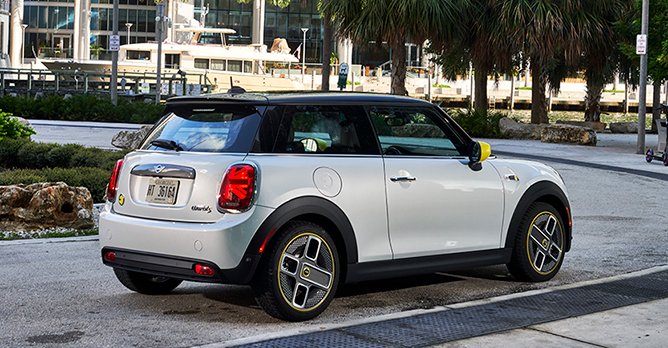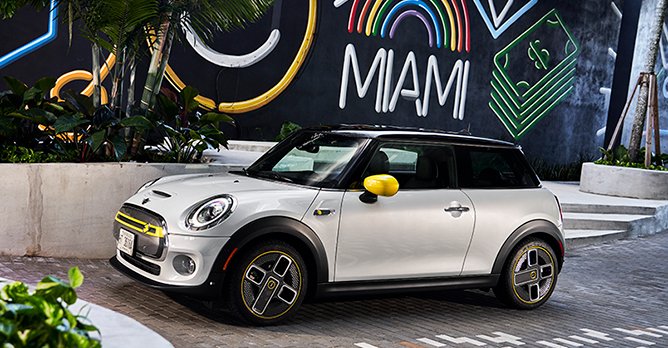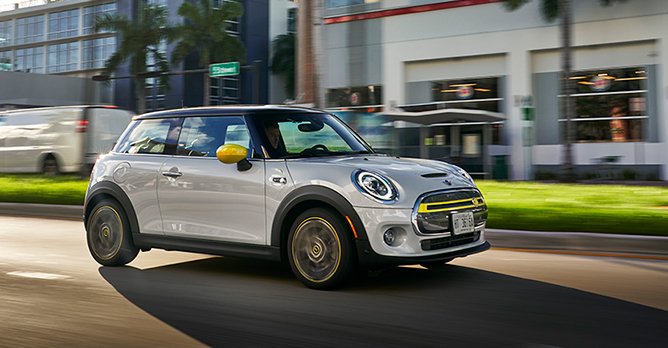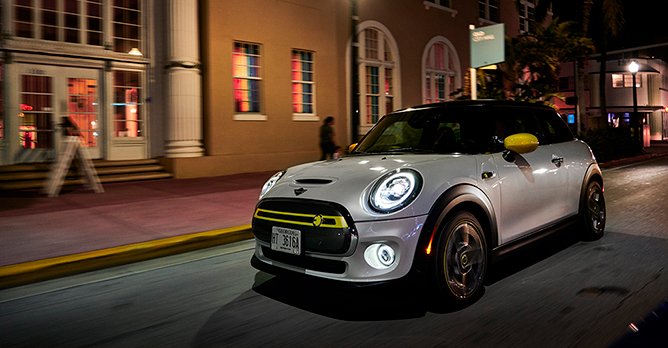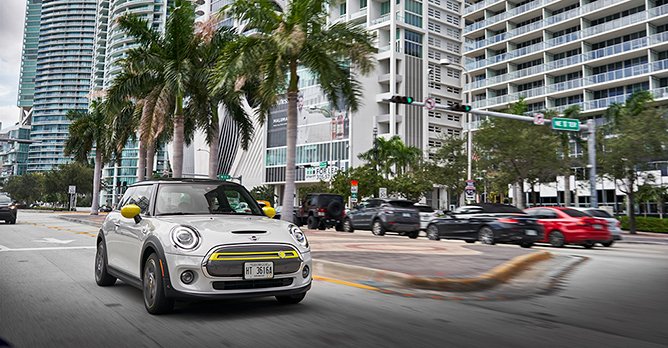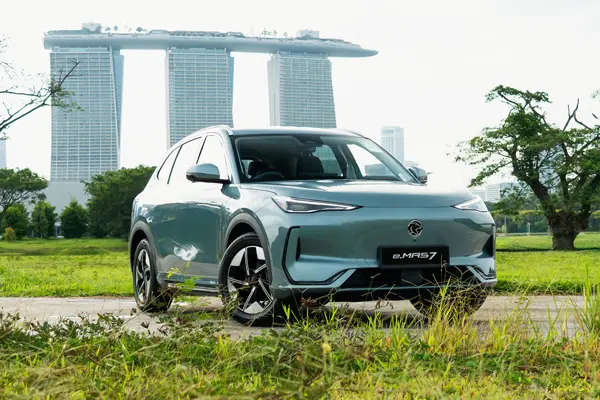5 reasons the MINI Electric is poised to succeed
06 Feb 2020|4,866 views
The first ever MINI Electric is a bold new step for the brand - an all electric hatchback that promises to deliver sensible and practical urban mobility with zero tailpipe emissions. Taking such a bold step forward expectedly brings with it all manner of challenges.
Through the development process of the MINI Electric, several key considerations have been deliberated to ensure that the new model is put in the best position to succeed. We spoke to two experts, Michael Krauss, Development Powertrain and Elena Eder, Project Manager, to learn more about how the MINI Electric was conceived, and why we should be truly excited about this car.
1. Streamlined production
Arguably, the biggest challenge in designing the MINI Electric was to ensure that the production process was as unchanged from the other MINI models as possible. This has practical reasons, of course. According to Krauss, the car's electric powertrain was designed around the existing mechanical architecture of the Cooper 3-Door.
As such, the car can be produced on the same production line alongside the Cooper 3-Door, which helps save on production costs. And, as the car largely utilises the same body panels and components as the Cooper 3-Door, this also affords MINI the ability to scale up production if necessary.
2. Unmistakable character
One look and you know this is a MINI. And, that is entirely the point. As Eder explained to us, one of the primary design considerations was to make the car as unchanged as possible.
Thus, the car has the same interior configuration and space as the Cooper 3-Door, and is also offered with the same personalisation options that you find across the MINI brand. You can even option to the delete the yellow accents. And, of course, a notable part of a MINI's appeal is how it looks, and the MINI Electric certainly looks the part.
3. Recognisable behaviour
Out on the road, the MINI Electric is most striking in how ordinary it feels - it drives just like a MINI. Yes, the 'one-pedal' feel is available with the high regeneration setting, but especially in the low regeneration setting, the car feels remarkably like a typical internal combustion engine car. According to Eder, this is intentional - it offers drivers the choice to drive the car how they see fit.
At the same time, the car still delivers the brand's trademark go-kart feel. Light, responsive and with eager acceleration, the car is perfectly suited for city driving.
4. Sensible pricing
Globally, the MINI Electric is priced under the Cooper S 3-Door (though this likely won't be the case in Singapore). That makes a ton of sense - the brand wants this model to be as accessible as possible, and as far as performance is concerned, it's just about right.
Rated at 181bhp and with 270Nm of torque available, the MINI Electric has performance comparable to the Cooper S. And being priced similarly, it offers buyers a reasonable alternative when shopping for a compact hatchback.
5. Genuinely exciting
If we're being honest, it's not often we get genuinely excited about a MINI. Yes, the John Cooper Works models are all well and good, but the core model range is so well-trodden that it's become almost predictable.
With the MINI Electric, there is a MINI to be truly curious and excited about. It is a car keenly poised for an increasingly electrified future, yet it is designed to be as accessible and approachable to the typical car owner as possible.
The first ever MINI Electric is a bold new step for the brand - an all electric hatchback that promises to deliver sensible and practical urban mobility with zero tailpipe emissions. Taking such a bold step forward expectedly brings with it all manner of challenges.
Through the development process of the MINI Electric, several key considerations have been deliberated to ensure that the new model is put in the best position to succeed. We spoke to two experts, Michael Krauss, Development Powertrain and Elena Eder, Project Manager, to learn more about how the MINI Electric was conceived, and why we should be truly excited about this car.
1. Streamlined production
Arguably, the biggest challenge in designing the MINI Electric was to ensure that the production process was as unchanged from the other MINI models as possible. This has practical reasons, of course. According to Krauss, the car's electric powertrain was designed around the existing mechanical architecture of the Cooper 3-Door.
As such, the car can be produced on the same production line alongside the Cooper 3-Door, which helps save on production costs. And, as the car largely utilises the same body panels and components as the Cooper 3-Door, this also affords MINI the ability to scale up production if necessary.
2. Unmistakable character
One look and you know this is a MINI. And, that is entirely the point. As Eder explained to us, one of the primary design considerations was to make the car as unchanged as possible.
Thus, the car has the same interior configuration and space as the Cooper 3-Door, and is also offered with the same personalisation options that you find across the MINI brand. You can even option to the delete the yellow accents. And, of course, a notable part of a MINI's appeal is how it looks, and the MINI Electric certainly looks the part.
3. Recognisable behaviour
Out on the road, the MINI Electric is most striking in how ordinary it feels - it drives just like a MINI. Yes, the 'one-pedal' feel is available with the high regeneration setting, but especially in the low regeneration setting, the car feels remarkably like a typical internal combustion engine car. According to Eder, this is intentional - it offers drivers the choice to drive the car how they see fit.
At the same time, the car still delivers the brand's trademark go-kart feel. Light, responsive and with eager acceleration, the car is perfectly suited for city driving.
4. Sensible pricing
Globally, the MINI Electric is priced under the Cooper S 3-Door (though this likely won't be the case in Singapore). That makes a ton of sense - the brand wants this model to be as accessible as possible, and as far as performance is concerned, it's just about right.
Rated at 181bhp and with 270Nm of torque available, the MINI Electric has performance comparable to the Cooper S. And being priced similarly, it offers buyers a reasonable alternative when shopping for a compact hatchback.
5. Genuinely exciting
If we're being honest, it's not often we get genuinely excited about a MINI. Yes, the John Cooper Works models are all well and good, but the core model range is so well-trodden that it's become almost predictable.
With the MINI Electric, there is a MINI to be truly curious and excited about. It is a car keenly poised for an increasingly electrified future, yet it is designed to be as accessible and approachable to the typical car owner as possible.
Thank You For Your Subscription.









